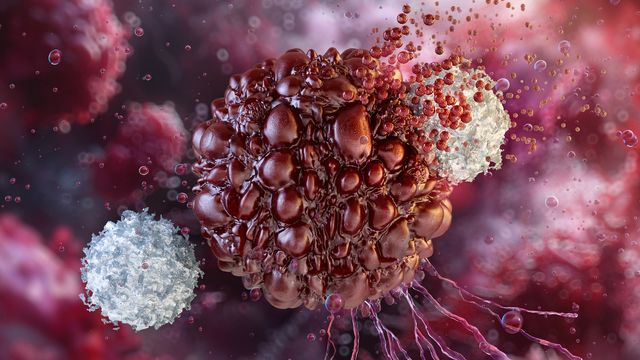Thank you. Listen to this article using the player above. ✖
Want to listen to this article for FREE?
Complete the form below to unlock access to ALL audio articles.
A new study, led by researchers at Children’s Hospital of Philadelphia (CHOP), identified tiny pieces of messenger RNA that are missing in pediatric high-grade glioma tumors but not in normal brain tissues. Preclinical research indicates that these missing RNA fragments can make difficult-to-treat tumors more responsive to immunotherapy. The findings were recently published in the journal Cell Reports.
One of the biggest challenges facing cancer research is the need to find safe and effective therapies for the most aggressive types of brain tumors. Adoptive immunotherapies with CAR-T cells are promising; however, they often also target healthy cells, which share most surface proteins with cancerous cells. While this collateral damage might be tolerable in patients with certain types of blood cancer, in the brain, wiping out healthy neurons is unacceptable. This means that deep knowledge of gene expression patterns exclusive to tumor cells is critical.
A potential means of discovering new therapeutic targets for brain tumors may lie in alternative splicing, a process whereby a single gene produces multiple proteins by rearranging exons, the building blocks of messenger RNA, in different combinations. Researchers suspected that splicing in glioma cells may differ from splicing in normal brain cells, which could help devise new therapeutic interventions.
In this study, researchers found that prior RNA sequencing analyses of high-grade gliomas failed to account for some very short exons called “microexons.” Deeper analysis revealed that in glioma, many of these microexons fail to be incorporated into messenger RNAs encoding important surface proteins, including the neuronal cell adhesion molecule known as NRCAM. For normal brain cells to make close contacts known as synapses, full-length NRCAM is needed, but in pediatric high-grade gliomas, two NRCAM microexons were consistently skipped, resulting in a distinct protein structure with unknown function.
When studying these microexons in more detail, the researchers found that the shortened version of NRCAM generated through microexon skipping was essential for cancer cell migration and invasion in Petri dishes and for tumor growth in a preclinical mouse model implanted with glioma cells. This makes the glioma-specific version of NRCAM an especially attractive immunotherapy target because the tumors won’t be able to shut it down easily.
“While microexons may be small, the effects they have on the overall protein structure are quite profound,” said senior study author Andrei Thomas-Tikhonenko, PhD, chief of the Division of Cancer Pathobiology at CHOP and Professor of in the Department of Pathology and Laboratory Medicine at the Perelman School of Medicine of the University of Pennsylvania. “Because the skipping of NRCAM microexons profoundly changes protein conformation, we were able to develop a mouse monoclonal antibody against the glioma-specific version of NRCAM. When mixed with glioma cells, the antibody worked like a highlighter, “painting” glioma cells and marking them for killing by T cells armed with an immune receptor for mouse antibodies.”
“In addition to developing these immune receptors clinically, we are actively using our proof-of-principle experiments to design traditional CAR T cell-based immunotherapeutics that selectively target glioma cells,” said first study author Priyanka Sehgal, PhD, a research scientist in the Thomas-Tikhonenko laboratory at CHOP. “This could also change the way we find new targets in other solid tumors.”
The next steps for this work will be to expand preclinical research and identify a specific form of immunotherapy that could potentially be explored in a clinical trial. The researchers also noted that similar molecular mechanisms have been observed in other tumors such glioblastoma multiforme and cancers of neuroendocrine origin, which also could be targeted with NRCAM-directed immunotherapeutics.
Reference: Sehgal P, Naqvi AS, Higgins M, et al. NRCAM variant defined by microexon skipping is a targetable cell surface proteoform in high-grade gliomas. Cell Reports. 2025;44(8). doi: 10.1016/j.celrep.2025.116099
This article has been republished from the following materials. Note: material may have been edited for length and content. For further information, please contact the cited source. Our press release publishing policy can be accessed here.
